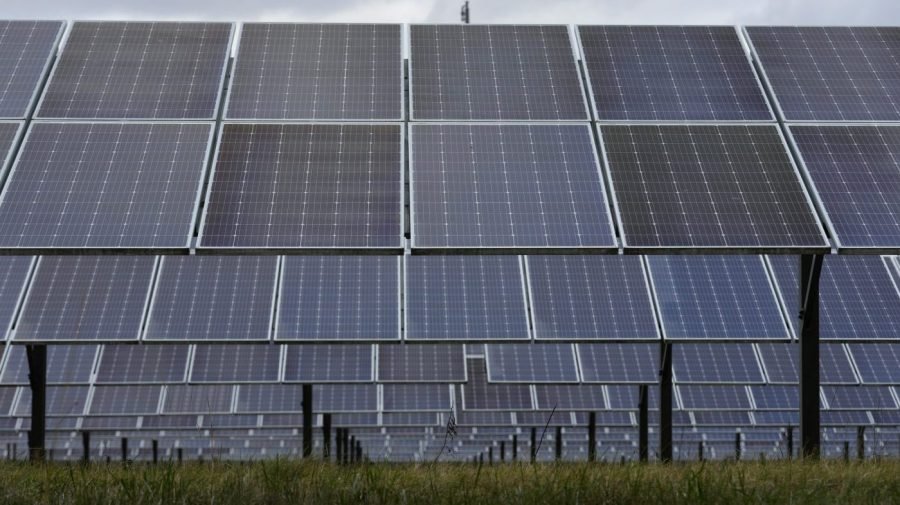
Ramping up U.S. solar energy production by just 15 percent could help the country make significant progress toward achieving national emissions reductions goals, a new study has found.
Implementing such a shift would reduce annual carbon dioxide releases by 8.54 million metric tons — or about 12.38 percent of the yearly target of 69 million metric tons, according to the research, published on Wednesday in Science Advances.
“This is an exciting study in that it harnesses the power of data science to offer insights to policymakers and stakeholders on how we can achieve CO2 reduction targets,” corresponding author Francesca Dominici, director of the Harvard Data Science Initiative, said in a statement.
On the surface, an 8.54-million-metric-ton decrease would be just a small slice of the country’s overall greenhouse gas emissions.
For example, U.S. utility-scale power generated about 1.65 billion metric tons of carbon dioxide emissions in 2022, with 99 percent of that coming from fossil fuel combustion, the authors noted, citing data from the U.S. Energy Information Administration (EIA).
Nonetheless, such a reduction would make a significant dent in the country’s aims of slashing 1,380 million metric tons of carbon dioxide in 20 years, the authors explained.
To understand the benefits of a shift toward more solar, the researchers examined five years of hourly electricity generation, demand and emissions records from the U.S. EIA, beginning in July 2018.
They homed in on 13 regions: California, Carolinas, Central, Florida, Mid-Atlantic, Midwest, New England, New York, Northwest, Southeast, Southwest, Tennessee and Texas.
Harnessing the resultant dataset, they built an advanced statistical model to evaluate how surges in hourly solar production would impact carbon dioxide emissions within a given region and for its neighbors. The scientists said they were able to quantify both immediate decreases and, for the first time, delayed emissions reductions from that added renewable energy generation.
In California, they found that a 15 percent increase in solar power at noon was correlated with a reduction of 147.18 metric tons of carbon dioxide in the first hour and 16.08 metric tons eight hours later.
As such, the authors observed that the benefits of added solar power varied immensely by region, with areas like California, Florida, Texas, the Mid-Atlantic, the Midwest and the Southwest exhibiting the greatest benefits. Other areas, such as the Central U.S., New England and Tennessee, saw minimal effects, per the study.
After examining the interregional implications of increasing solar power, the authors described potential for cross-regional collaborations in adoption of this power source. This approach, they explained, offers the possibility “of collectively addressing CO2 emission reduction goals in a more integrated and effective way.”
They cited the installation of a giant battery in California, for example, as a tool that helped stabilize the electricity grid across neighboring regions as well.
But facilitating the expansions of solar energy, the researchers noted, will require cost cuts for modules and installations, as well as policy incentives such as federal investment tax credits.
“Our study offers policymakers and investors a roadmap for targeting solar investments where emissions reductions are most impactful,” lead author Arpita Biswas, who worked on the study as a postdoctoral scholar at the Harvard Chan School of Public Health, said in a statement.
That roadmap also demonstrates “where solar energy infrastructure can yield the highest returns,” noted Biswas, who is now an assistant professor in computer science at Rutgers University.
“From a research perspective, our findings also demonstrate the power of harnessing large-scale, high-resolution energy data to generate actionable insights,” she added.


